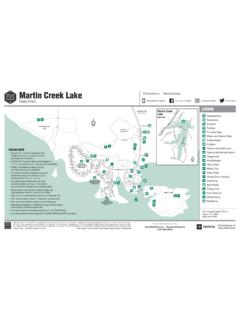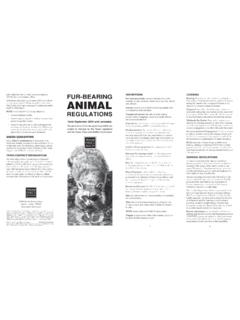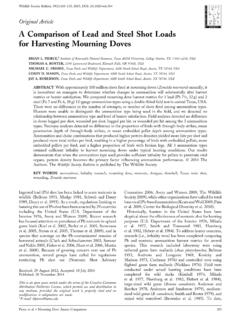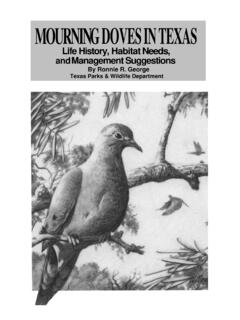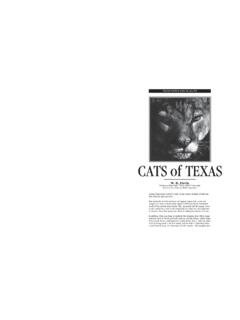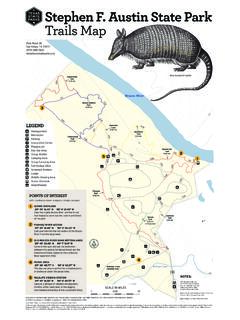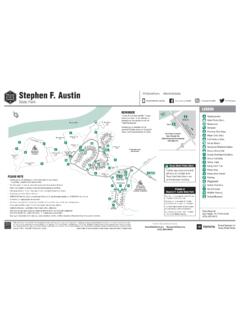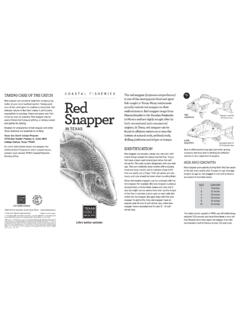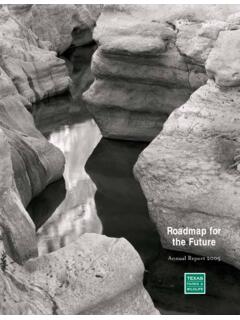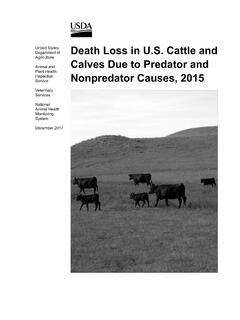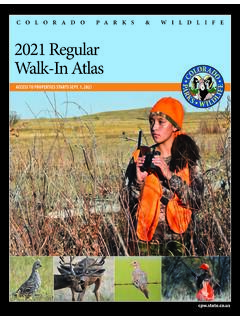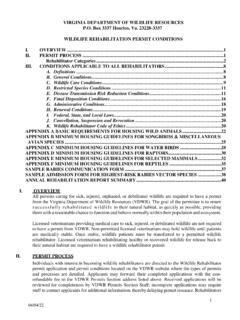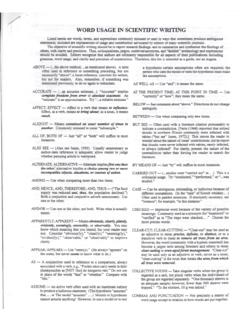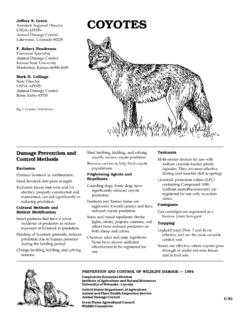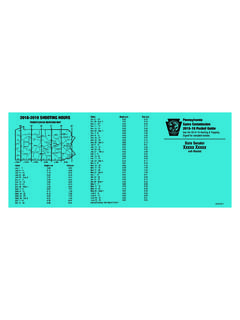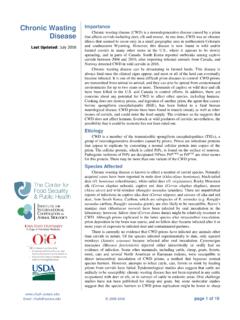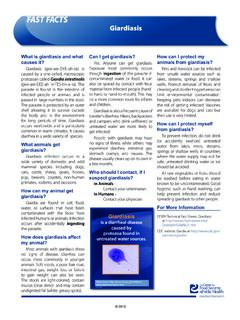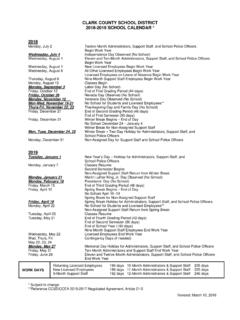Transcription of Texas Parks and Wildlife Department continues to ...
1 TPWD receives federal assistance from the Fish and Wildlife Service and other federal agencies. TPWD is therefore subject to Title VI of the Civil Rights Act of 1964, Section 504 of the Rehabilitation Act of 1973, Title II of the Americans with Disabilities Act of 1990, the Age Discrimination Act of 1975, Title IX of the Education Amendments of 1972, in addition to state anti discrimination laws. TPWD will comply with state and federal laws prohibiting discrimination based on race, color, national origin, age, sex or disability. If you believe that you have been discriminated against in any TPWD program, activity or event, you may contact the Fish and Wildlife Service, Division of Federal Assistance, 4401 N. Fairfax Drive, Mail Stop: MBSP 4020, Arlington, VA 22203, Attention: Civil Rights Coordinator for Public Access. Wildlife Division 4200 Smith School Road Austin, Texas 78744 Texas Parks and Wildlife Texas Parks and Wildlife Department continues to maintain records and solicit information on mountain lion sightings and mortalities.
2 This information is used primarily to document the distribution of cougars and assess the presence of the cats in certain areas. If you have seen or killed a mountain lion recently, the Texas Parks and Wildlife Department would like to hear from you. To report a mountain lion sighting, call the toll free number (800) 792 1112. You may also report to TPWD headquarters, or you may call the nearest office: Alpine (432) 837 2051 Brownwood (325) 645 5977 Canyon (806) 655 3782 Kerrville (830) 896 2500 Pleasanton (830) 569 8700 Rockport (361) 790 0306 San Angelo (325) 651 4748 Tyler (903) 566 1626 Despite reports of mountain lion attacks on people in California, mountain lion attacks are rare. Only four attacks on humans in Texas have been reported since 1980, all of them in remote areas of West Texas . From 1890 2001, there were 98 attacks across the and Canada, 17 of those were fatal. Cougar attacks have increased during the past few decades but are still much rarer than other hazards from animals or nature.
3 For example, dogs annually kill 18 20 people and inflict suture requiring injuries on 200,000 residents. Increases in cougar attacks are probably due to increases in their numbers and more people using wildlands and building residences in areas where mountain lions live. If you live in an area inhabited by mountain lions, these preventive actions will help you avoid a possible attack: Install outdoor lighting in areas where you walk after dark. Remove any vegetation a lion could hide in near children s play areas and your house. DO NOT FEED Wildlife , including deer. Remember, predators follow prey. Keep pets under control. If pets are left outside overnight, confine them to kennels with tops. Store all garbage securely. Hike with others, carry pepper spray and a walking stick, and avoid early morning, dusk and nighttime excursions. DO NOT APPROACH a mountain lion to get a better view or picture.
4 If you encounter a mountain lion: Pick up small children to prevent them from running and triggering a rush or attack. Stay calm, talk calmly, and slowly back away, keeping eye contact with the mountain lion. DO NOT RUN OR TURN YOUR BACK. Do what you can to appear LARGER by raising your arms or waving a stick. If the lion is aggressive throw rocks or sticks, and speak firmly and loudly. FIGHT BACK if a lion attacks you. Lions can be driven off by fighting back. DO NOT PLAY DEAD. Even children have successfully driven off a mountain lion by fighting back. Report all aggressive mountain lion behavior. 2008 TPWD. PWD BR W7000 232 (6/08) In accordance with Texas State Depository Law, this publication is available at the Texas State Publications Clearinghouse and/or Texas Depository Libraries. Cougars are active in the mornings and evenings as well as at night. They are solitary animals except during a short (3 5 days) breeding time, which can occur at any time of the year.
5 Most litters are born in the summer and fall and average 2 3 kittens. Cubs stay with the female until they are 11 to 24 months of age, when they leave and begin looking for their own home range. The size of a lion s home range is determined by prey abundance and availability, topography, and the pres ence of other lions. Male home ranges usually encompass the The mountain lion, also known as cougar, panther, catamount or puma, has the widest distribution of any wild cat from Canada to South America. Prior to European settlement, mountain lions lived throughout Texas . By 1960, predator control, loss of habitat, and human settlement reduced mountain lion numbers and limited their distribution within Texas to the mountainous country in the Trans Pecos region of West Texas . Since 1983, the Texas Parks and Wildlife Department has solicited and recorded voluntarily reported sightings and mortalities of mountain lions.
6 Mountain lion sighting and mortality information, rather than actual population estimates is used to assess the presence of the cats in certain areas. Currently, sightings of mountain lions have occurred in all 254 Texas counties. However, not all sightings are confirmed. Mortalities provide a more accurate reflection of where mountain lions have lived. Mortalities have been recorded in 67 counties (see Texas Mountain Lion Mortality Reports, 1983 to 2005). The mountain lion is a large, slender cat with a smallish head and noticeably long tail. Their color is a light, tawny brown, which can appear gray or almost black, depending on light conditions. Contrary to popular belief, there are no black panthers in Texas ; no one has ever captured or killed a black mountain lion. Its size (total length) ranges from about 6 1/2 feet in females to as much as 8 1/2 feet in males. Male cougars weigh between 100 150 pounds, and females weigh between 45 96 pounds.
7 In the wild, cougars live about 10 to 11 years. Their range in Texas is primarily in the west, south, and central regions. range of several females and vary from 80 to 200 square miles. Males do not usually tolerate other male cougars in their home range. Female home ranges are normally 20 to 100 squaremiles and may overlap. In Texas , mountain lions prey primarily on white tailed deer and mule deer. Javelina, pronghorn antelope, feral hogs, big horned sheep, raccoons, coyotes, porcupine, opossum, rabbits and a variety of other small mammals also supplement their Texas Mountain Lion Mortalities 1983 2005 diet. Mountain lions will occasionally take domestic livestock. Although cattle and horses are less vulnerable to lion predation once they have grown in excess of 500 pounds, sheep, goats, and pigs remain vulnerable for their lifetime. Ranchers experiencing livestock loss due to mountain lions or other predators may contact the USDA/APHIS/ Texas Wildlife Damage Management Services at (210) 472 5451, for assistance.
8 Counties where Texas mountain lion mortalities have occurred
